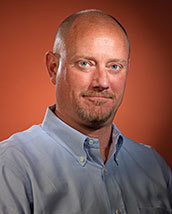Setting the standard: interview with Linda Hothem

The idea sounded simple enough, Linda Hothem recalls. Rather than ask the market to accept 3PLs' sustainability claims on faith, why not establish a LEED-like program for logistics? What third-party warehouses and distribution centers lacked was a set of universal standards they could use to demonstrate their progress toward adopting sustainable practices. It should be relatively easy to develop something on par with the widely embraced metrics used by the construction industry.
But it didn't turn out to be quite so simple, says Hothem, CEO of logistics service provider Pacific American Group and outgoing member chair of the International Warehouse and Logistics Association's (IWLA) board of directors. Part of the problem was that several aspects of sustainability turned out to be extremely tough to measure—while it's easy enough to quantify energy use or water consumption, it's a whole different story with social responsibility or corporate citizenship.
Still, Hothem believes the effort was worth it. Once the program is up and running, IWLA members will have a way to demonstrate their progress against sustainability goals, she says. At the same time, she adds, they'll likely begin to see a payoff in the form of lower costs and improved profitability.
Hothem recently spoke with DC Velocity Group Editorial Director Mitch Mac Donald about the origins of the program, its progress to date, and what she envisions for the future.
Q: You've been a key driver in IWLA's sustainability initiative. Could you tell us a bit about how the program came about?A: The initiative arose out of a discussion we had two years ago about establishing a standard by which our members could measure their operations' sustainability. We were taking cues from programs such as [the construction industry's] LEED certification program. That program has worked well in that sector. Its metrics are well known and widely embraced. Our thought was simple, why couldn't we establish a LEED-like program for logistics?
Q: Seems simple enough, but the challenge, of course, lies in moving the concept to reality. How did you approach that?
A: We decided we'd follow the LEED model and ensure that our program was similarly built on a foundation of measurable, quantitative metrics. We knew that nothing about this could be subjective. For instance, we knew if we couldn't assign some kind of numeric or percentage value to the amount of propane gas being utilized or the amount of water consumed at a given facility, it wouldn't work.
Q: So establishing the metrics is really the foundation from which everything has grown?
A: Absolutely. Once we were able to identify the metrics, we submitted them to IWLA's director, Joel Anderson, and the IWLA executive committee. Our proposal met with a very good response. The consensus seemed to be that a LEED-like sustainability program was not something that would cost members seeking certification an inordinate amount of time, money, or resources. It also gives them a great step forward in satisfying their customers, who more and more are going to be asking them "How sustainable are you?"
Q: What was the next step from there in moving the initiative forward?
A: We determined that the best way to go about this was to take a phased-in approach. Phase one is really to come up with the metrics and begin collecting data from members to establish a baseline. That's where we are right now. Certification will come with the next phase.
Q: What kind of response have you gotten from IWLA members so far?
A: At this point, we are simply encouraging our members to begin to report, by facility, their water, propane, and electrical usage. At the same time, we are also making it clear that this isn't just about being green; it's about true sustainability, which includes factors like social responsibility, and that sustainability that will lead to lower costs and improved profitability for our members.
Q: That raises the question of how you go about measuring something like social responsibility or corporate citizenship. That's not as easily quantified as, say, water or electricity use.
A: Exactly. We're still tweaking our process based on input from our member base, and I think there will be some future adjustments, particularly with the social responsibility metric. But as a way of getting started, we basically figured that social responsibility is taking care of your employees to a certain extent and ensuring their safety. All of our members are under OSHA reporting responsibility, so for that metric, we decided to ask, you know, 'What was your OSHA score?' I am assuming that represents your employees' safety.
It has also been difficult to find a way to quantify corporate good citizenship. Here, we're looking for things like community service and charitable donations—a lot of people donate time or services or a number of things. But simply asking, "What are you doing for your community in dollars?" isn't a valid measure given that one member might be operating 3 million square feet of space in a community, while another has just 50,000 square feet—our membership is that diverse. For that reason, we've also been considering a kind of dollars-per-square-foot approach.
Related Articles

Copyright ©2024. All Rights ReservedDesign, CMS, Hosting & Web Development :: ePublishing